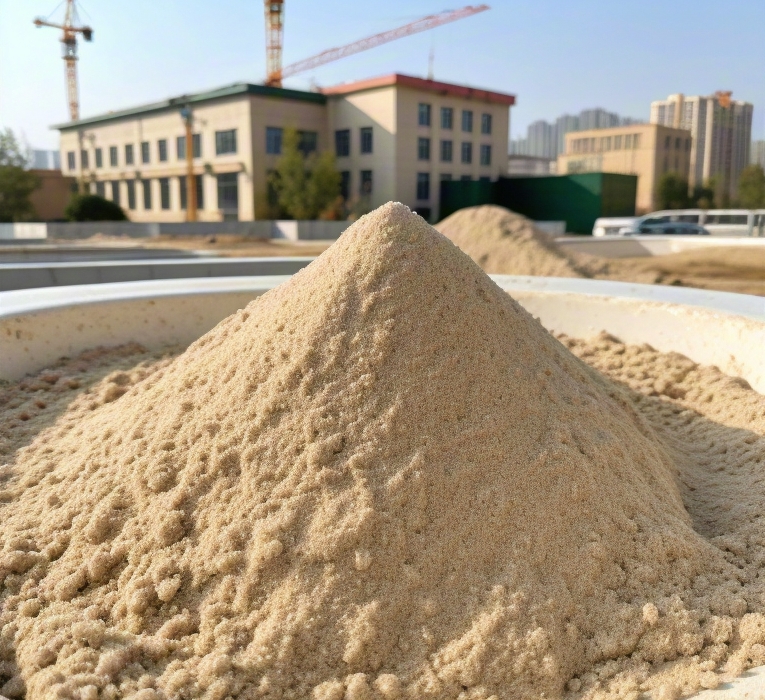Wet mixed mortar is cement, fine aggregate, additives and water, with various components determined according to performance. After the mixture is measured in a certain proportion at the mixing station, the mixture is transported to the place of use by mixing truck in a special container for storage, and the wet mixture is used for the specified time.
The use of hydroxypropyl methyl cellulose as a water retaining agent and retarder of cement mortar to make mortar pumpable. In the mortar used as a binder, in order to improve spreadability and prolong operation time, the water retention of hydroxypropyl methylcellulose HPMC will not cause the pulp to break due to excessive drying after coating, and improve the strength after hardening. Water retention is an important property of hydroxypropyl methyl cellulose HPMC, which is also the performance of many manufacturers of wet mixed mortar in China. The factors that affect the water retention effect of wet mixed mortar include the amount of HPMC added, the viscosity of HPMC, the fineness of particles and the temperature of the use environment.
The important role of HPMC in wet mixed mortar is mainly manifested in three aspects, one is excellent water retention performance, the second is the influence on the consistency and thixotropy of wet mixed mortar, and the third is the interaction with cement. Cellulose ether has a good water retention effect, and taking it depends on the water absorption rate of the base, the composition of the mortar, the thickness of the mortar layer, the water requirement of the mortar and the setting time of the solidified material. The higher the transparency of hydroxypropyl methyl cellulose, the better the water retention.
The factors affecting the water retention of wet mixed mortar include the viscosity of cellulose ether, the amount of addition, the particle fineness and the use temperature. The higher the viscosity of cellulose ether, the better the water retention. Viscosity is an important parameter of HPMC performance. For the same product, the viscosity results measured by different methods vary greatly, and some are even twice the difference. Therefore, when comparing viscosity, it must be carried out between the same test methods, including temperature, rotor, etc.
In general, the higher the viscosity, the better the water retention effect. However, the higher the viscosity, the higher the molecular weight of HPMC, and its solubility will be correspondingly reduced, which has a negative impact on the strength and construction performance of mortar. The higher the viscosity, the more obvious the thickening effect of the mortar, but it is not proportional. The higher the viscosity, the higher the viscosity of the wet mortar, and it will exhibit a sticking knife and high adhesion to the substrate when applied. However, increasing the structural strength of the wet mortar itself is not helpful. During construction, the anti-flow performance is not obvious. On the contrary, some low viscosity but modified hydroxypropyl methyl cellulose is to improve the structural strength of wet mortar has excellent properties.
The more the amount of cellulose ether HPMC added to the wet mixed mortar, the better the water retention performance, and the higher the viscosity, the better the water retention performance. Fineness is also an important performance index of hydroxypropyl methyl cellulose.
The fineness of hydroxypropyl methyl cellulose also has a certain effect on its water retention. In general, for hydroxypropyl methyl cellulose with the same viscosity and different sizes, the finer the size, the smaller the size. Better water retention.
In wet mixed mortar, the addition of cellulose ether HPMC is very low, but it can significantly improve the construction performance of wet mixed mortar, which is the main additive affecting the construction performance of mortar. The correct selection of hydroxypropyl methyl cellulose has great influence on the performance of wet mixed mortar.

